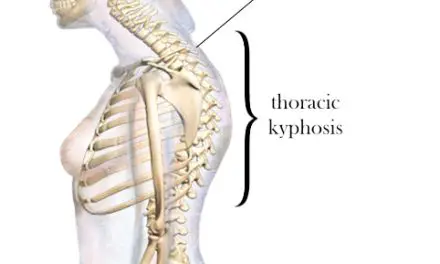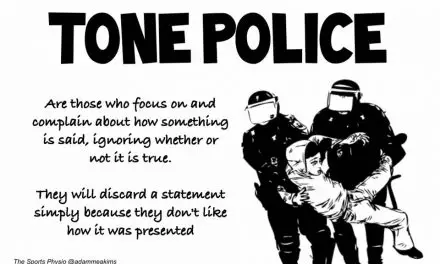Kinesio Tape is a brand of elastic therapeutic tape that is supposed to alleviate pain and improve range of motion. It’s often applied to body parts where injury and pain often occurs, such as shoulders, knees, ankles, wrists and forearms, and lower back. It’s similar to other brands of athletic tape, like KT tape and Rocktape, but their differences are minor.
With its gaudy colors that resemble the characters in the movie “Tron,” it’s similar to most athletic tapes that mimic the stretchiness of your skin. It’s also water resistant so that you could have it on your skin for three to four days, even with regular showers.
How does Kinesio Tape work?
Despite what you may have read or heard about how Kinesio Tape works, no one really knows how it actually reduces pain, improve movement. A 2016 study pointed out said that different nerve stimuli beneath the skin may “inhibit the transmission of nociceptive signals” to the spinal cord. In other words, taping reduces the sensitivity of nociceptors (neurons in your skin that detect threat or potential threat) so that it’s easier for you to move with less or no pain.
While this is a common explanation to why Kinesio Tape may reduce pain, the researchers in that study said that the original intention was to avoid sensory stimuli when the tape is put on.
“To this end, it remains unclear to what extent the gate control theory is involved in the efficacy of [Kinesio Tape],” the researchers wrote.
Another popular idea of how Kinesio Tape works is that it “lifts” the skin to alleviate pressure to reduce pain and swelling from an injury.
This may sound reasonable, but it doesn’t follow basic human physiology and physics.
“Kinesio Tape rests on the surface of the skin. As an exercise physiologist, I find it hard to understand how [it} can have an effect on muscle fibres that lie beneath the fascia of the muscle,” Dr. John Brewer said, who is the Director of Sport at the University of Bedfordshire in the U.K.. “The forces involved in physical activity are significant, and the likelihood of tape on the surface of the muscle having any genuine impact on the stability of the muscles is, therefore, limited.”
He added that there’s no evidence that shows increased blood or lymph flow like you might get from a lymphatic drainage massage.
“Some claims suggest that Kinesio Tape ‘lifts’ the surface of the skin; this cannot be possible unless there is a force in the opposite direction, such as pushing down on the skin, so this is highly unlikely,” Brewer said.
Another researcher from the Universidade Cidade de São Paulo in Brazil said that the biological rationale behind how Kinesio Tape works makes almost zero sense to him.
“Their theory is that lifting the skin will reduce the pressure from pain nociceptors and this could reduce pain,” said Dr. Leonardo Costa, who led a 2014 study that includes 12 trials with nearly 500 subjects. Costa and his team found “no significant difference” between Kinesio taping and fake taping.
“They also claim that circulation under the skin would improve,” Costa said. “So my question is: What about conditions where the real problem is far from the skin, like shoulder impingement and back pain? The theory is quite simplistic and fragile, in my view.”
He also said that no one has tested if the tape actually increases the space between the dermis and epidermis as Kinesio Tape founder Dr. Kenzo Kase (a chiropractor) and proponents of taping suggested.
“With regards to alleviating pain from a psychological point of view: all trials demonstrated quite clearly that Kinesio Tape’s effects are due to non-specific effects, including psychological effects,” Costa said.
Because it’s difficult to measure the physiological claims, one researcher suggested that psychological factors should be included to make better sense of the how taping works.
“I think psychological studies could be done. If athletes perceive a benefit and their performance improves because of this perception, then there may be a benefit despite no scientific evidence,” Dr. Ahmad M. Mostafavifar said, who is the lead author of one of the earliest systematic reviews of Kinesio taping. “Some athletes in major colleges and professional [sports] can absorb the costs where high schoolers and others may not.”
While the original explanation of how Kinesio Tape works doesn’t add up scientifically, an alternative one would be that taping can change how your brain and nervous system perceive pain.
Does it matter how you apply Kinesio Tape?
Current scientific evidence finds that there’s almost no difference in how you put the tape on for pain relief.
For example, a 2019 study found that there’s hardly any differences between the clinical effects of Kinesio taping, McConnell taping, and sham taping for anterior knee pain.
More research in the late 2010s, including three systematic reviews, found similar results:
- A Brazilian systematic review found “no evidence to support the use of KT in clinical practice for patients with chronic nonspecific low back pain,” based on 11 RCTs with a total of more than 700 patients.
- For pain and muscle strength, a systematic review of six Japanese studies found “limited, inconclusive evidence about the effectiveness of KT on muscle strength and functional performance.”
- A Spanish systematic review of six RCTs on Kinesio taping for knee osteoarthritis and low back pain alone found that such taping is not better than sham taping.
A 2023 study of 29 people with hypermobile Ehler-Danlos syndrome (hEDS) found “no significant difference” between two ways of taping for shoulder pain, even though both groups have similar amounts of pain relief.
And no matter what tape you use or how you tape a body part, all methods seem to work nearly equally well.
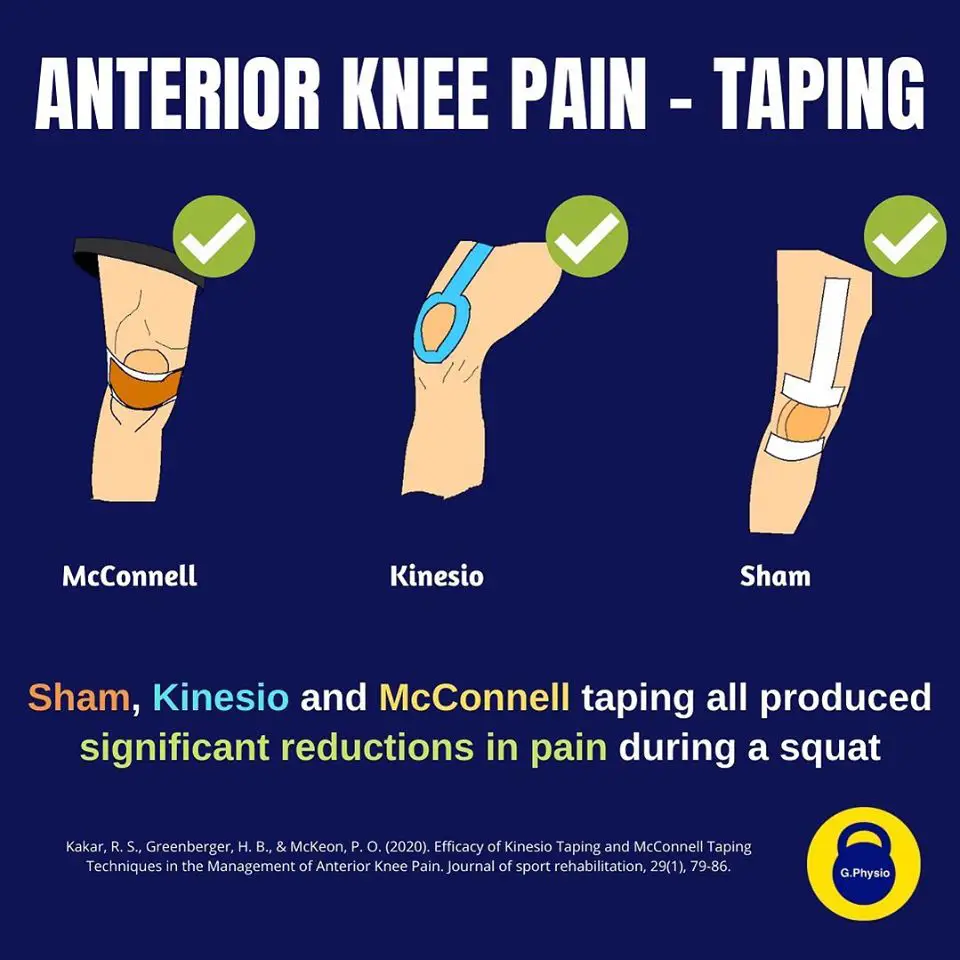
Illustration courtesy of The Good Physio.
Does science support using Kinesio Tape?
Exercise physiologist Nick Tiller wrote in The Skeptic Inquirer that the disparity between what science find versus what the health and fitness industry claims is the largest he has ever seen, “second only to chiropractic and homeopathy.” While he cannot foresee how long this trend will continue, the knowledge gap between science and marketing claims have been widening in the past two decades.
Since 2012, there have been at least 30 systematic reviews that examine various effects of Kinesio Tape and KT Tape for different types of pain at different body parts. Early research in the 2010s didn’t have many trials to work with. And so, the researchers usually lump different body parts together to get a general “feel” to see if Kinesio taping works or not.
One of these early systematic reviews in 2012 examined the effects of Kinesio Tape with muscle and joint pain based on six randomized-controlled trials (RCTs) for the shoulder, lower back, knee, and Achilles tendon.
The researchers found “insufficient evidence for or against the use of Kinesio Tape to improve pain, function, performance, and time to return to play following musculoskeletal injury.” They also said that there’s “almost no available evidence regarding the use of Kinesio Tape to improve return to play.”
Another study that was published a year later from Teesside University reviewed eight RCTs that include side effects, breast cancer-related lymphedema, shoulder impingement syndrome, neck pain, chronic low back pain, plantar fasciitis, knee pain, and muscle spasm from stroke.
Nearly all of these studies found that Kinesio Tape is not significantly better than sham taping or an exercise-only intervention.
The exception is with plantar fasciitis, where short-term taping with physical therapy “produced statistically greater improvements in pain and fascia thickness” compared to physical therapy alone. But no one really knows if the differences were clinically important.
In 2013, another systematic review was published based on 12 RCTs. Again, the authors found almost the same thing as the previous reviews.
“One of the primary roles of the health professional is to confirm, through evidence-based knowledge, the effectiveness of a treatment modality, not only due to its popularity,” the authors concluded.
More taping research, similar stories
Throughout the 2010s, research continued to show similar results and conclusions about Kinesio taping, including the one by Costa and his colleagues, who wrote that the benefits of Kinesio Tape are “trivial” and “small enough to not be considered clinically worthwhile.”
They speculated that the popularity of Kinesio Tape among physiotherapists and athletes is because of the heavy marketing campaigns, such as the one used in the London 2012 Olympic Games, not because of scientific evidence.
“Policymakers and clinicians should carefully consider the costs and the effectiveness of this intervention when deciding whether to use this intervention,” the authors suggested.
You’d think that more studies would flip the conclusion because of better research methods, but that’s not the case.
A 2014 Singaporean study that focused on Kinesio Tape’s effects on various muscular pain and disability, based on 17 RCTs, found similar results as previous reviews.
“Existing evidence does not establish a superiority of [Kinesio taping] in reducing disability when compared to either minimal or other forms of intervention,” the authors concluded. But they mentioned that having some Kinesio taping is better than minimal treatment and “may be effective” when it’s used with physical therapy.
Another review in 2015 based on eight RCTs also found that Kinesio Tape is no better than non-elastic tape for neck pain and low back pain, even when the quality of the RCTs for low back pain are quite high.
Kinesio Tape and shoulder pain
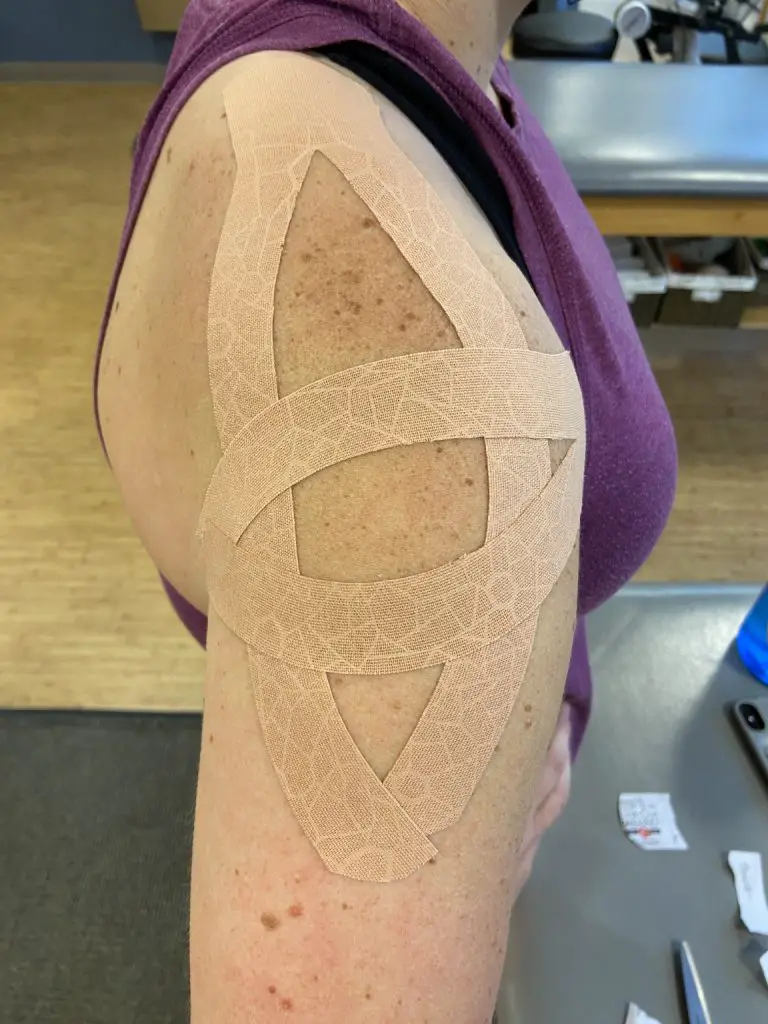
Photo: Penny Goldberg
By the late 2010s and early 2020s, researchers have enough Kinesio Tape and KT Tape trials to pool data not only for general muscular and joint pain, but also for more specific areas like Kinesio taping for the shoulder. The number of studies in these reviews have come a long way from the 2012 review with six trials.
In 2019, researchers from Egypt and Vietnam compared Kinesio Tape pooled data from 26 trials found that while Kinesio Tape provided “significant improvement” in shoulder pain and disability when combined with exercise, it’s no better than fake taping and steroid treatments. But taping seems to work slightly better when the shoulder is at certain positions.
The highest decrease in shoulder disability was measured in internal rotation and flexion. They mentioned that shoulder disease and how long the tape was put on did not affect the results.
When compared to steroids, Kinesio Tape was only “significantly better” for shoulder extension.
A 2020 systematic review and meta-analysis of 14 trials for shoulder pain and disability also found “no significant difference in pain intensity” between Kinesio taping and fake taping.
Not surprisingly, another systematic review and meta-analysis in 2022 by a group of South American and Spanish researchers found that Kinesio taping with or without other interventions “was not superior to other interventions for improving shoulder pain intensity, function and ROM flexion in patients” with shoulder impingement syndrome.
However, for hemiplegic shoulder pain, such as those with paralysis on one side of the body, may offer temporary pain relief, according to a 2021 systematic review that examined nine randomized-controlled trials from China and Italy.
Overall, it seems like whether Kinesio tape and other tapes work for shoulder pain or not depends on specific conditions of the shoulder.
Kinesio Tape and knee pain
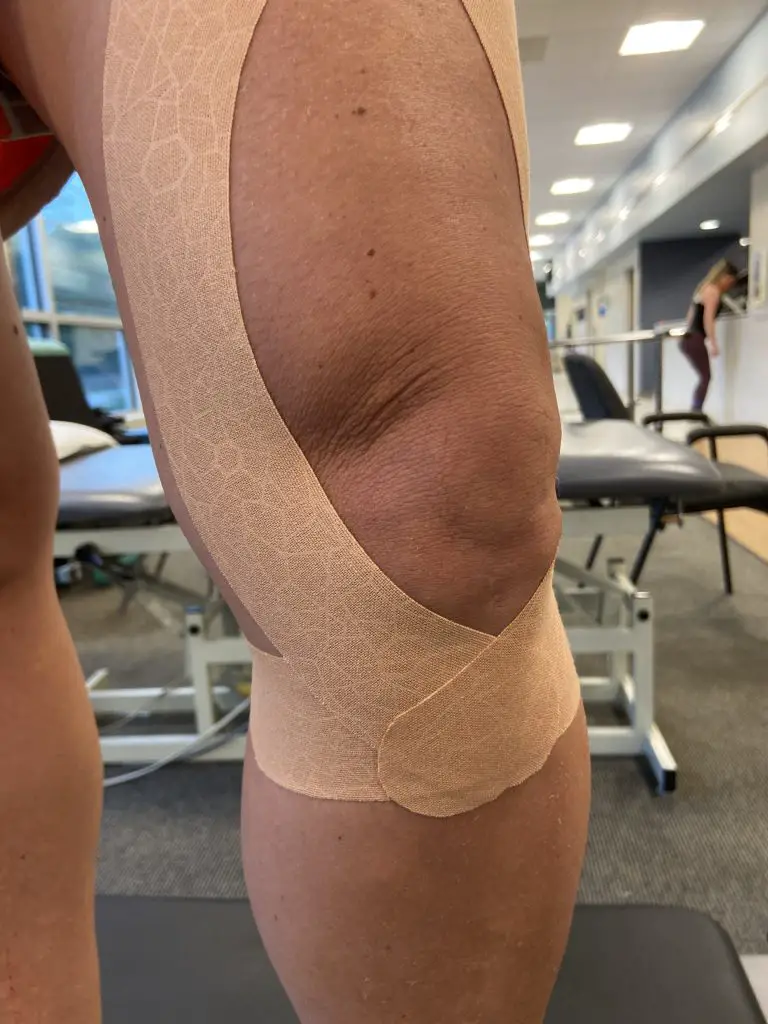
Most taping methods are used to unload the patellar tendon and also give proprioception to the tissues around the knee. Photo: Penny Goldberg
The evidence behind whether or not Kinesio taping for knee pain works is mixed.
A Chinese systematic review published in 2020 found that both taping and taping with physical therapy may improve knee range of motion and quadriceps strength among patients with knee osteoarthritis.
But there was not much improvement in hamstrings strength. The researcher reviewed 11 trials with a total of 490 patients. When both groups were compared, those who had physical therapy had better outcomes than those with taping alone.
In 2021, another review, led by Dr. Jean-Philippe Berteau at City University of New York, critically evaluated six RCTs by using the WOMAC system. They found that there’s “no strong evidence” that taping alone is enough to reduce the score on the WOMAC scale for knee osteoarthritis.
In other words, the amount of knee pain reduction and quality of life improvement are not significant enough to warrant taping as a valid treatment, which is almost exactly like what Costa and his colleagues had proposed seven years earlier.
Kinesio Tape and the ankle
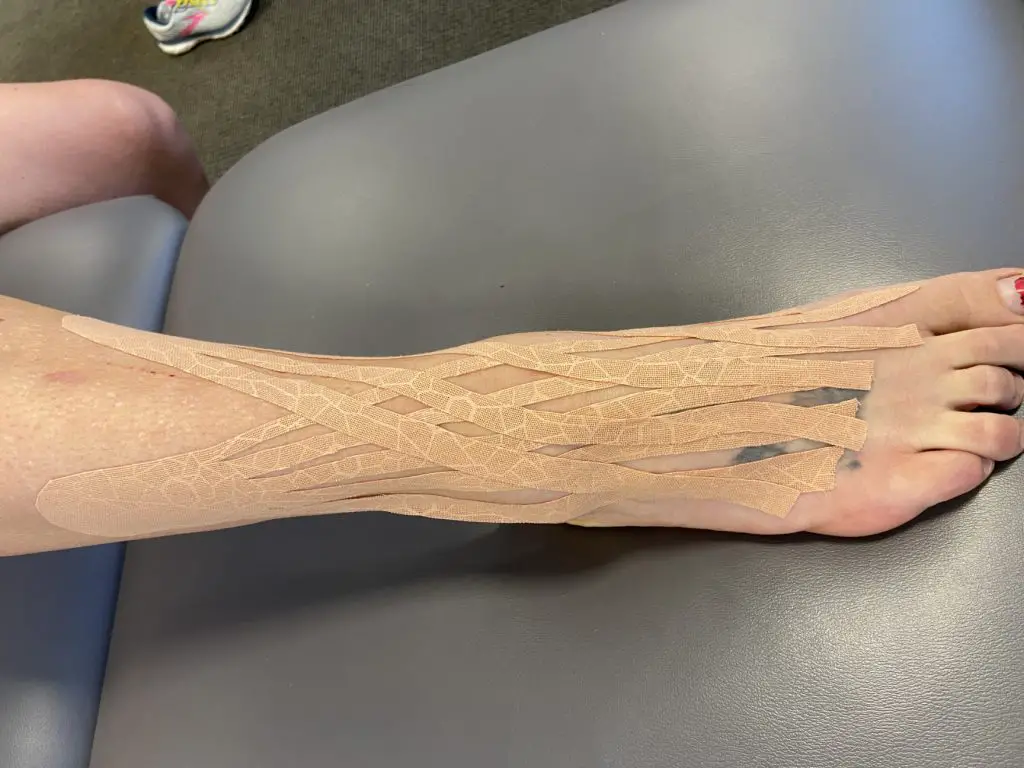
Photo: Penny Goldberg
Kinesio taping for ankle injuries and pain also has a similar story. A 2021 systematic review and meta-analysis from Brazil examined 84 qualified trials on taping and ankle injuries and pain and 44 of them were used in the meta-analysis. They found no evidence that Kinesio taping can be used as a prevention or treatment of ankle conditions among the young and old, healthy or injured.
Like the previous research since 2012, it seems that the increasing body of taping literature tells the same story: Kinesio Tape and other brands of taping are not that better than most interventions for most types of pain, disability, and flexibility improvement.
However, a 2022 systematic review and meta-analysis by a team of Italian researchers found that Kinesio Tape may help improve ankle stability for athletes with chronic ankle instability. This condition is often caused by repetitive ankle sprains mostly from various sports (e.g. court, track and field, contact).
The researchers included studies that used Kinesio Tape only, without using other interventions, in which they whittled down to eight studies with a total of 270 athletes.
Based on the data collected on gait function, ankle range of motion, dynamic balance, postural sway, lower leg muscle contraction, and other factors, they found that Kinesio Tape to be “effective only on some of the performances and ankle functions analysed.”
The analysis also found that gait function improved and inversion-eversion and postural sway in movement in the mid-lateral direction reduced with Kinesio taping.
Kinesio Tape and wrist pain
Interestingly, scientific evidence somewhat supports the use of Kinesio taping for wrist pain relating to carpal tunnel syndrome. A 2021 review found that taping has significant pain reduction with Kinesio Tape whether it’s used alone or with another intervention.
One problem the researchers found is that each study reviewed used a different set of comparisons, questionnaires, and procedures, which can skew the review’s outcome. Until better trials are done for this niche topic and given the track record of taping trials, take this review with a grain of salt for now.
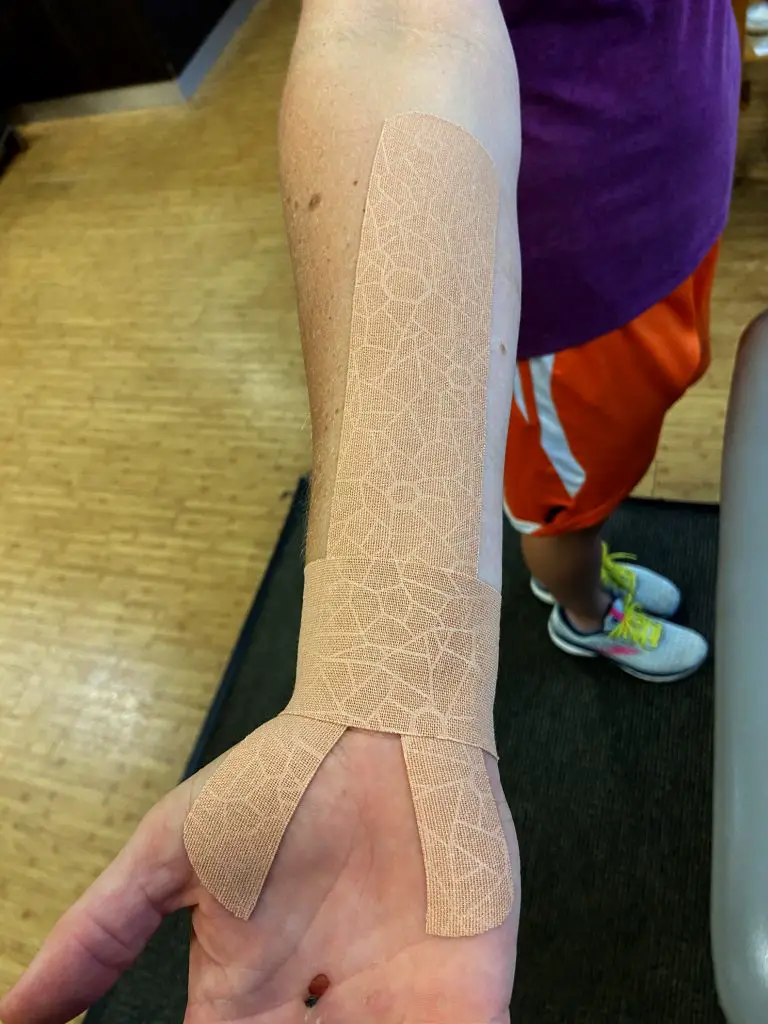
Photo: Penny Goldberg
But why do many manual therapists still use Kinesio Tape and other tapes despite the lack of good scientific evidence?
“My best guess is that because physiotherapists are still not used to checking the evidence before investing their time and money into a course. If they decided to play with the word ‘Kinesio Tape’ on PubMed, they would never invest a single cent on these courses,” Costa said.

Senior Airman Haylley Carlson, 28th Medical Operations Squadron physical therapy technician, applies Kinesio Tape on a patient’s ankle to reduce swelling and increase blood flow to the area at Ellsworth Air Force Base, S.D., Oct. 4, 2012. (U.S. Air Force photo by Airman 1st Class Alystria Maurer/Public Domain)
How do you remove Kinesio Tape?
Kinesio Tape that has been applied correctly generally comes right off without damaging the skin. It can be extra sticky so it should NEVER be ripped off. If the tape has been applied to someone with fragile skin, you should use caution when removing it. In most cases to remove the tape, follow the steps below:
- Apply an oil based product such as baby oil or cooking oil to the tape to loosen the adhesive. Let the oil soak into the tape for a few minutes after application.
- Remove the tape in the direction of hair growth by slowly rolling the tape back with one hand. Your other hand should apply pressure to the skin in the opposite direction of tape removal.
- Remove any adhesive residue with an oil-based product once the tape is completely off.
When should you avoid taping?
Researchers in a 2015 study indicated some contraindications for using Kinesio taping:
- open wounds
- malignancy (cancer)
- deep vein thrombosis
- acute infection
- severe allergy
- type 2 diabetes
Another study from 2012 suggested that clinicians should check the patient’s skin for allergy to the tape by putting a small piece of tape (about 1 x1 cm2) on the palmar side of the forearm. If the allergy test causes redness or any skin color in 15 minutes, then the patient may likely have an allergic reaction and should avoid using the tape.
Should you toss away Kinesio Tape?
Probably not and neither are what some researchers and clinicians are saying. Most of the RCTs examined show that Kinesio Tape and other tape brands are just as good—not better—than regular tapes, exercise, and other conservative interventions.
Even if wearing Kinesio Tape or any other bright-colored tape is nothing more than a placebo effect, it could influence the outcome of the athletes’ perception of their performance and pain and their actual performance.
In fact, a 2018 study found that color—red, blue, beige—did not affect the participants’ athletic performance in their legs. But even if there are some benefits to the placebo effects, there are some precautions that athletes, patients, and healthcare professions must consider.
Physiotherapist and triathlete Paul Westwood warned that Kinesio Tape could promote the idea that “their body is not good enough and they need an extrinsic factor (tape) to allow it to function.” He mentioned that the placebo effect might eventually wear off if the athlete relies too much on it.
Manual therapists who find taping—Kinesio Tape or regular taping—useful in their practice should continue to use it, but they should be honest and transparent about how and why it works (or not work) for their patients.
Of course, taping is just one out of many “tools” in the metaphorical toolbox of manual therapists and should not be the panacea for pain relief.



